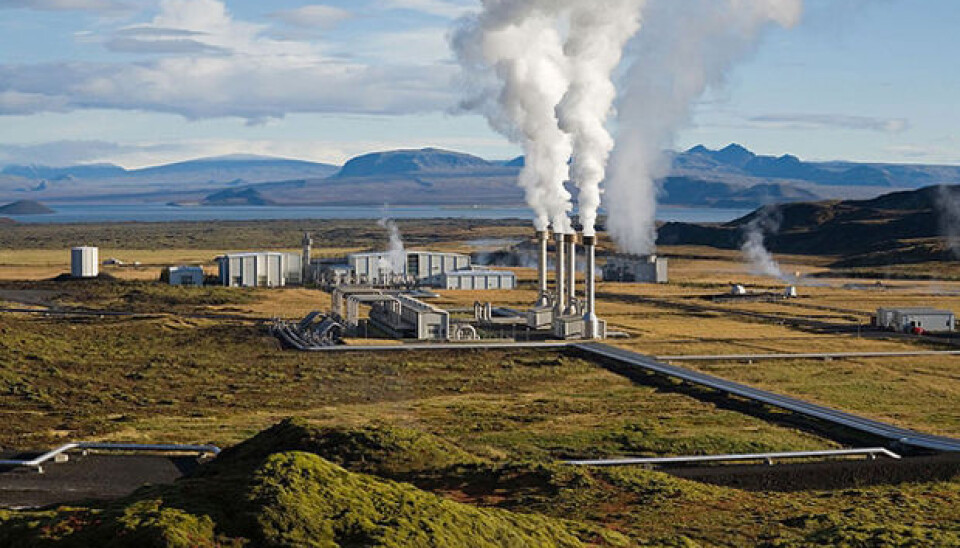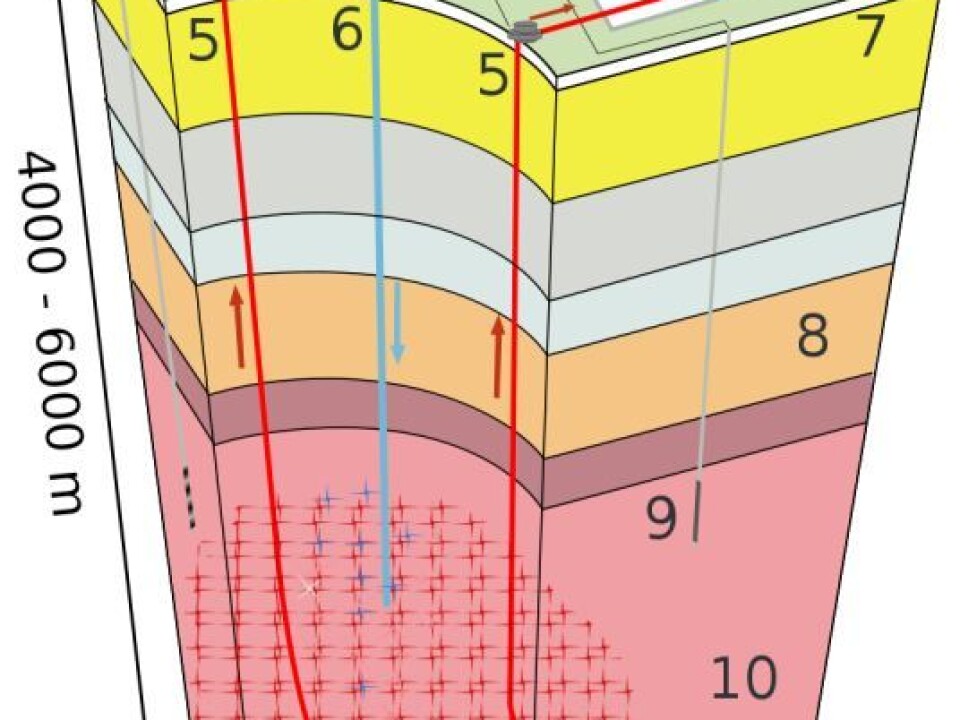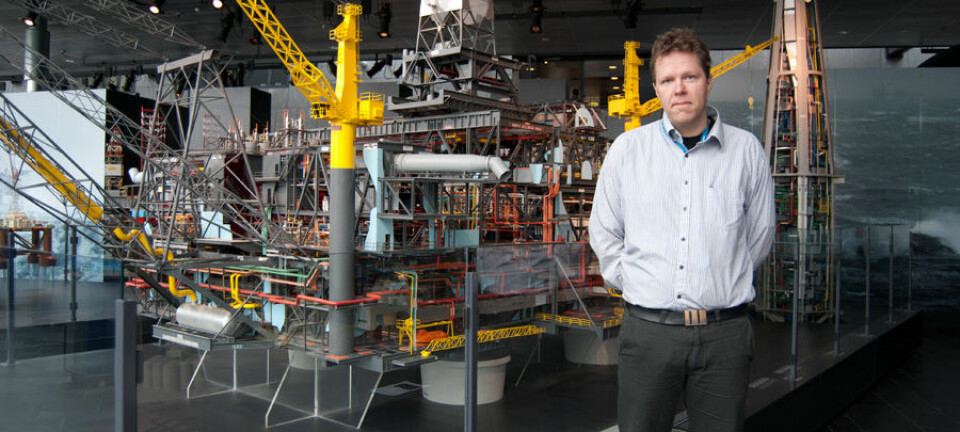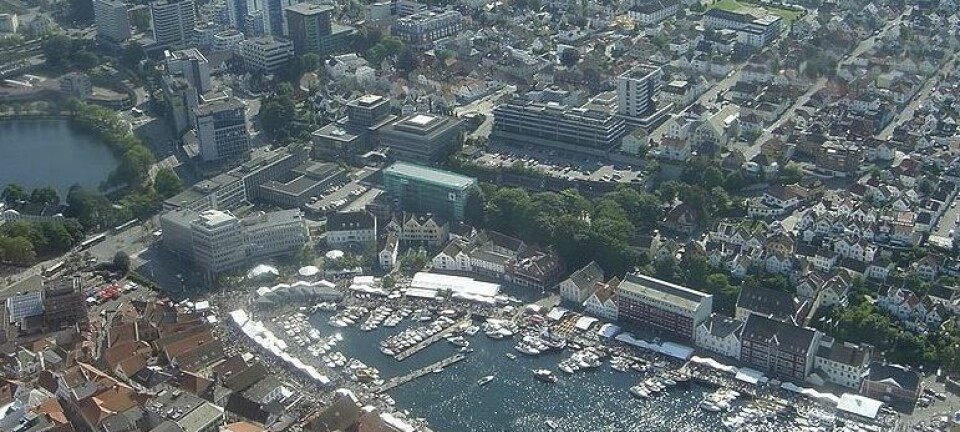
Hot rock gets a cold shoulder
Thermal energy is there for the taking in the rock below us if you have the equipment to drill deep enough. Oil producer Norway has the hardware and the know-how, but is there any spark of interest?
Denne artikkelen er over ti år gammel og kan inneholde utdatert informasjon.
“This is the first geothermic energy conference in Norway. That’s quite something considering we actually produce 3.5 terawatt hours of geothermic energy a year for heating,” says Inga Berre.
She is a mathematician employed at Christian Michelsen Research and the University of Bergen and has led the informal network of Norwegian researchers who work with this form of energy.
“After all, it’s a considerable source of energy, despite getting little of the limelight,” says Berre.
The scientists hope this conference will do something to rectify this disparity.

Natural nuclear power plants
Geothermal energy production exploits natural heat in the ground. This heat is easiest to access in junctions between plates in the Earth’s crust, for instance Iceland.
But geoenergy isn’t just the steam that literally vents from the ground in global hotspots like Iceland and can be utilised almost directly. In Norway most of the subterranean heat comes from radioactivity.
“Granite is a great kind of rock for geoenergy,” explains Berre. She poses together with a little group of researchers with the mountain Løvstakken in the background.

“Løvstakk granite contains elements such as sodium, thorium and radium. About 80 percent of the heat in the Earth’s crust comes from the gradual decay of radioactive substances,” she says.
Test drilling for heat
Engineers have to drill deep to get down to high temperatures. And that’s what we’re doing now in the local Løvstakk granite in the Bergen suburb of Fyllingsdalen, not far from the conference,” says Odleiv Olesen from the Norwegian geological agency NGU.

“They got down to a depth of 2-300 metres then they ran into technical problems and re-positioned the drill,” says Olesen. Their goal is to drill 1,000 metres.
Shallow geoenergy
300 metres isn’t deep in a geoenergy context. But many drillings go no deeper. At modest depths there isn’t much of a temperature difference from the surface. But heat-pump installations can capture energy from small differences in temperature.
This is how, for instance, Akershus University Hospital outside Oslo gets its heat. Oslo’s Gardermoen Airport is heated with groundwater beneath the airport.
“We were recently in contact with the supermarket Spar-kjøp at Kokstad here in Bergen, because they have just drilled a smaller installation and have had good experiences with it,” says Berre.
“In fact, they weren’t given any government subsidy from Enova because their installation is so profitable,” she says.
Subterranean quarrel among neighbours
A map of such geoenergy facilities clearly spells out its success. They have popped up like mushrooms in recent years.
In Oslo they threaten to make municipal construction and digging operations difficult. How far down does a plot of land actually go?
In the front-running country Sweden geoenergy installations can be so densely placed that homes risk sucking heat from beneath their neighbour’s garden.
“We recommend placing them at least 20-25 metres apart,” says Geologist Randi Ramstad.
Deep thrills
Shallow geoenergy doesn’t need to be nursed by scientists. It’s growing and thriving already.
But as drilling goes deeper it becomes costlier, more difficult and more promising. Deep geothermal energy from depths in the range of 5 or 6 kilometres is really exciting for scientists.
At such depths the ground temperature can exceed 100° C. Higher temperatures of course mean more energy.
The energy can be exploited in a variety of ways, such as for district heating and for electricity generation.
Drilling is dear
The first day of the conference focused on the challenges of getting heat from greater depths.
Experts in oil drilling presented new and better methods of getting down to depths. Drilling is the costliest part of such projects.
Experts and simulations explained how difficult it is to make computer models that predict optimal spots to drill.
And when a drill hole is first opened the dirty technological reality takes over, leaving clean theoretical models in their ivory towers. Drill pipes can get plugged up by chemical residues from the rock.
But the promise of a big, stable and environmental energy source looms above all these challenges.
Negligible potential
The problem, however, is that not everybody sees things this way. Vidar Havellen from the company Norconsult also delivered a report about geoenergy. It sent cold shivers down the drill holes of the geothermal enthusiasts.
In short it said the current potential for deep geothermal energy in Norway is negligible because of the high costs of drilling, competition from other cheaper sources of energy and temperatures that are too low for district heating facilities.
“Amateurish,” was a rebuttal that could be heard in the audience.
Critics claimed that this report was marred by crucial errors. Nor had it been given final approval by Enova, which had ordered it.
“The district heating facilities of the future will get by on lower temperatures. And the temperature maps of Norwegian ground rock aren’t reliable,” protested others.
Drilling for the oil industry
NGU is in the process of mapping temperatures better in Fyllingsdalen, not far from the conference.
But NGU isn’t drilling on behalf of geoenergy researchers. Its client is the Research Council of Norway in collaboration with a number of oil companies.
The powerful oil and gas industry has ample money to throw into such subterranean projects. They drill on land because this helps reveal conditions offshore beneath the North Sea, where hydrocarbon deposits are found.
“Without knowing it, the Research Council has supported deep geothermal energy,” said Olesen from NGU, triggering chuckles from the audience.
A seat by the door
No direct support from the Research Council of Norway is certain in the near future. Indeed, the key collective R&D strategy document for the energy sector in Norway, Energi 21, has for the first time let geothermal energy come in from the cold, but its seat is just inside the door.
Trond Moengen from Energi21 submitted the latest edition of the report, which was published last spring.
Deep geothermal energy was given lowest priority on the list of promising energy forms. It isn’t considered particularly profitable or realistic.
A death sentence
Energi21 is an important document. It’s a guideline for national strategies that influence the Research Council of Norway’s expenditures and priorities for energy systems.
“Pretty much of a death sentence for deep geoenergy,” somebody commented from the auditorium.
Still, the majority at the conference was satisfied that Energi21 had given mention to geoenergy. “We’re one step further and we’re on our way,” said Inga Berre.
But the informal network of researchers that Berre leads has to continue to survive on idealism, alms from industry and support for its operations from her employer Christian Michelsen Research.
Moengen from Energi21 made one concession: in the future deep geoenergy could attain a higher ranking as a Norwegian industry.
Statoil takes initiatives − but not in Norway
Svein Roar Engelsen from the Norwegian state oil company Statoil’s unit for geothermal energy supported him on that count.
“Oil and gas companies have the in-house competence that makes us better capable of exploiting this resource,” he said. He was thinking not just of their experience in drilling on the seabed of the North Sea, but also their expertise in supervising large-scale projects.
Engelsen also had his doubts about the viability of deep geoenergy in Norway. But he said that Statoil will invest in future projects in the USA and Indonesia. These are two countries where the Earth’s crust is thinner and hot rock is closer to the surface than it is in Norway.
Going international
“Will you cooperate with Norwegian suppliers in these projects?” queried a hopeful member of the audience.
But Engelsen said that Statoil initially has to get further along a learning curve before it could commit to prospective contracts with others.
“I’d recommend that those of you who have good ideas to jump into the international market on your own,” said Engelsen.
Europe drills into the deep
This could have been sage advice. Even though it might seem that domestic authorities wouldn’t touch geothermal energy with a 10-foot pole, the EU is much more involved in it through its 8th framework programme, explained Volker Oye from the geo-scientific research foundation NORSAR.
“The EU has shown a lot of interest in several Norwegian geoenergy projects that have been given low priority by the Research Council of Norway,” he proclaimed.
“Apply for EU funds,” urged Oye, and added dryly that the EU signals will probably be heard at Energi21 and other panels for renewable energy.
Øye revealed that two new deep geoenergy plants are likely to be built in Europe, partly with EU funds – one in Hungary in 2020 with a drill hole reaching a depth of six kilometres, and a somewhat less ambitious one in the Czech Republic.
France is where European test facilities for deep geoenergy have been centred. Germany has Europe’s first commercial plant at Laundau, a 90-minute drive south of Frankfurt. Australia is also planning to build several facilities.
In developing countries
Deep geoenergy is thus a form of energy that several countries are investing in.
“Especially in developing countries, where the alternative is diesel-fuelled generators,” says Inga Berre. She remains optimistic and thinks it’s better to be sitting by the door of Energi21 than completely out in the cold.
“The Norwegian company Green Energy Group delivered a modular 5 kW power plant to Kenya in April 2011. And more power plants will be exported to Kenya as well as to Nicaragua and Indonesia,” says Berre.
These power plants utilise heat from ground water at a depth of several thousand metres.
But in Fyllingsdalen the test drilling in hard Løvstakk granite came to a halt a couple of days ago because of technical problems stemming from difficult conditions underground.
The drilling had to restart with a new hole right nearby. But it’s running again and who knows whether they will strike golden heat down deep?
-------------------------------------------
Read the article in Norwegian at forskning.no
Translated by: Glenn Ostling
































